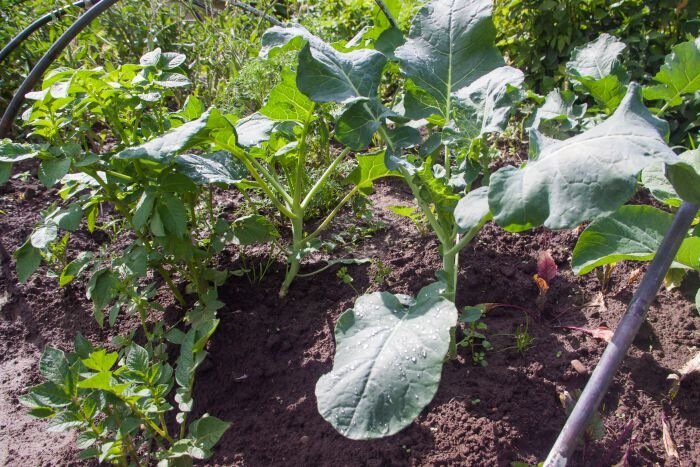To grow seedlings by May, you need to know how to deceive nature or be a little more cunning.
We compared some scientific facts with folk methods to dispel doubts.
Supplementary lighting with phytolamps
Science recommends phytolamps with a red-blue spectrum (660 nm and 450 nm), which stimulate the production of chlorophyll, accelerating photosynthesis.

Research by the All-Russian Research Institute of Vegetable Growing (2023) showed that 14 hours of light per day reduces the vegetation period of tomatoes by 20–25%. The first month of growth is critical for seedlings — a lack of light leads to stem elongation and a decrease in yield.
Summer residents often replace phytolamps with incandescent lamps, believing that they provide enough light. However, such lamps emit excess heat (up to 60°C), which dries out the leaves and soil. In addition, their spectrum is 80% infrared radiation, which is useless for plants.
Peat tablets
Peat tablets contain anti-stress additives and growth stimulants (for example, humic acids). They preserve the root system during transplantation, as they dissolve in the soil without damaging the roots.
"Growing in eggshells" seems eco-friendly, but the shells acidify the soil (pH drops to 5.0) and decompose for months, slowing down the development of roots. An experiment by agronomists from the Timiryazev Academy confirmed that plants in shells lag behind in growth by 10-15 days.
It is also necessary to take into account the characteristics of popular varieties for February sowing.
Tomatoes "Bull's Heart"
Pros: Large fleshy fruits (up to 800 g), high yield (5–6 kg per bush).
Cons: Requires additional lighting and stable temperature (+22–25°C). With insufficient light, it sheds ovaries.
Cherry tomatoes
Pros: Resistant to low light, suitable for balcony growing. The varieties "Balcony Red" and "Yellow Cherry" ripen in 85 days.
Disadvantages: Small fruits (10–15 g), yield is 30% lower compared to ground varieties.
California Wonder Peppers
Pros: Classic variety for early sowing, resistant to temperature changes. Fruits ripen in 100-110 days.
Disadvantages: Grows slowly without additional heating. Stops developing at temperatures below +18°C.
Peppers "Ogonek"
Pros: Sharp, decorative, unpretentious. Suitable for growing on a windowsill.
Disadvantages: Requires picking and frequent fertilizing (once every 10 days).
Mistakes that ruin seedlings
1. Early sowing of heat-loving crops. Cucumbers and squashes sown in February, without additional lighting, turn into "vines" with underdeveloped roots.
For example, the cucumber "Zozulya" produces stems up to 1.5 m long when sown early, but after planting in the ground it dies from the wind. Solution: Sow them no earlier than mid-March. Use varieties with a short growing season (for example, "German F1").
2. Using garden soil without processing. Pest larvae (wireworm, spider mite) destroy young plants. In 70% of cases, contaminated soil leads to the death of seedlings.
Solution: Heat the soil at +70°C in the oven for 30 minutes or use a store-bought substrate with perlite and vermicompost.
Reviews from summer residents
"This year I used phytolamps for tomatoes "Bull's Heart" for the first time. The seedlings are strong, did not stretch out. I harvested 3 weeks earlier! But I did not risk sowing cucumbers in February - I remember last year's failure" - Irina, forum " Dachny Klub ".
"I tried growing peppers in eggshells - a complete failure. The roots couldn't break through the walls, and the soil became acidic. Now only peat tablets!" - Sergey, " Ogorodniki " VKontakte group.
